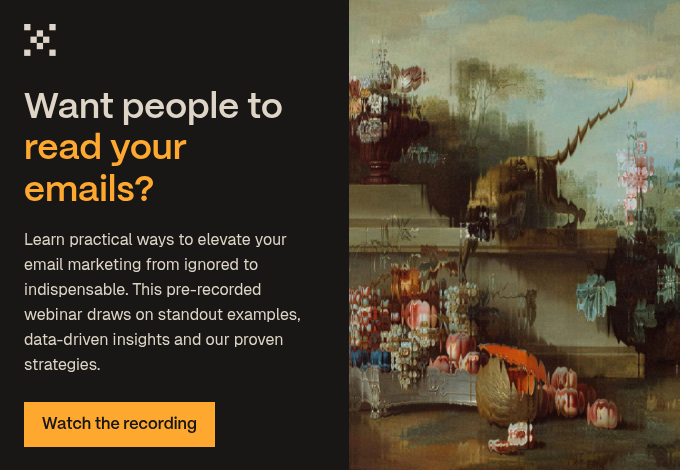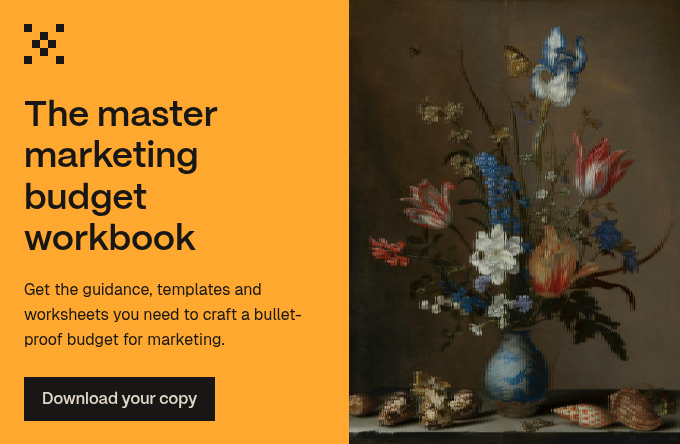Broadcasting to our (high-flying, successful, discerning) FinTech audience, today. Hey, how are yah?
Now, we could say something relentlessly positive and bland, like: 'Everyone makes mistakes; the important thing is to learn from them blah blah blah.' But you're not here for platitudes. You're here for practical advice. You want to pre-empt those easy-to-make marketing mistakes before they happen, and damn the learning opportunity.
We got you.
Not speaking to your customers' needs
Don't scroll past this one!
Yes, it seems obvious. But hear us out. We've noticed when talking to FinTechs and looking at hundreds of FinTech websites, that you do have a tendency to position yourselves at the centre of your messaging. It's only natural; it's your business and your products. You've spent time on developing features to help people manage their financial operations, say. Of course you want to brag about those clever, clever features.
'Our state-of-the-art money processing software utilises the latest cloud-based technology, automated intelligence, and data storage and retrieval capabilities to streamline financial operations.'
Something like that. We see this a lot. It's dense, technical and over-hyped.
Instead, try to imagine you're speaking one-to-one with a potential customer. Think about the specific issues they're facing, and what benefits your business can bring to meet those needs. Keep it simple. Be direct. So, our above example becomes:
'Get rid of the information siloes that slow you down. By using our money processing software, your finance team will discover just how easy it is for them to collaborate effectively.'
Failing to do enough market research
To follow-on, if you have no idea who your target market even is, then you're never going to be able to speak to their needs.
There may be some value to demographic information, but don't let that be your focus - it can lead to stereotyping. Instead, interview customers and head to personal or business profile aggregate sites like LinkedIn. Look at what people are talking about on forums and see the language they use in reviews — either your own reviews or competitor reviews. Find out where they go for information. For B2B, think about job titles, verticals and company size.
Once you've done your research, segment your audience into personas, which are ideal representations of your target audience. We suggest anywhere between one and five personas, with several pain points, goals and common objections for each persona. For example, if you're a Fintech working in fraud and security analysis, you might have different personas for your B2B and your B2C offering.
Copying everything Stripe does
Another mistake that FinTechs make is trying to do everything that Stripe does. With this year's 95 billion dollar valuation, Stripe is now the most valuable FinTech in the US and the second-most valuable start-up in the world. Logically, the best move for any FinTech start-up wanting similar success is to follow their lead.
The thing is, we're willing to bet your marketing budget is significantly smaller. So yes, Stripe is doing loads of things right, from pay-per-click advertising to socials. But, you can't afford (we assume) to put millions towards LinkedIn Ads. Pay attention to their example, sure, but don't try to match the scale and breadth of their reach. You'll spread yourself too thin and it won't deliver results.
Instead, do two things: 1) focus your efforts and resources, and 2) differentiate your brand. We call this carving out your niche.
Laser-focused marketing
Small to mid-sized FinTechs must prioritise their marketing efforts. We recommend using inbound marketing to build up an audience as it costs 61 percent less than traditional outbound methods. And, you grow an audience over time that will keep coming back to your website for more.
The best place to start is to drive website traffic with weekly, SEO-driven, thought leadership blogging. We may have written one or two or three or four (you get the idea) articles on the subject. You could even start a webinar series or podcast, if writing isn't your cup of tea. Whatever format, be consistent, informative and entertaining.
Differentiated branding
The best website name for search engine optimisation might be 'Digitalbankingservices.com', but for some reason 'Revolut' didn't decide to go that route, did they?
Sometimes, to stand out, you have to know the rules and break them anyway. And yes, there's value in telling us about your fantastic team of qualified experts, or about how hard-working and customer-obsessed you are. Those things are true and good and they make a difference. But they're not differentiating.
So be bold. You're a debt financial solutions company? Say you're 'The only business in the world that loves debt'. You do payment processing? 'With how fast we make money move, we're the envy of pickpockets everywhere.' Small business credit lender? 'Putting the power back where it belongs: in the hands of small business owners.'
Not living your values
As a B Corp, we think of ourselves as a value-driven business, committed to being a force for good. Therefore, we care about this point.
In FinTech it's all to easy to make money, and money management, a value — that is, the core focus and measure of success. But actually, you're missing a big opportunity to refocus your marketing, as well as your internal processes, around other measurements. Are you a net zero company? Are you a payment platform that matches rounded up payments for charity?
In short, can you demonstrate positive values, as a business, in a tangible way? As long as you have the goods to back it up, it's not gauche to market yourself on that basis: it's setting the right example.
Have you made any of these marketing mistakes?
No judgement if you have. But if you fancy avoiding marketing jail (it exists; it's in Hull), then don't let those innocent mistakes snowball into marketing crimes. Confess now and — OK, we've over-egged the metaphor. We hear you.
Still, there's one easy way to avoid these and the plethora of marketing pitfalls out there. It's to get people who've made the mistakes already, and who've done all that hard learning along the way, to do the job for you. Yes, talk to the misguided fools who once spent way too much on Google Ads trying to be whatever the marketing equivalent of Stripe is. We won't make that mistake again.
 Posted by
Maddy Leslie
Posted by
Maddy Leslie






